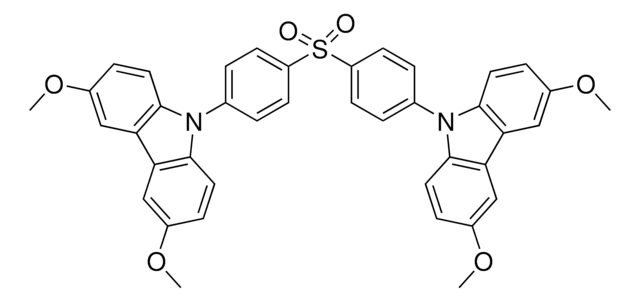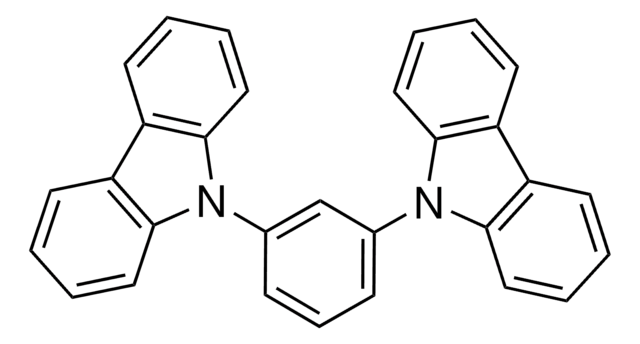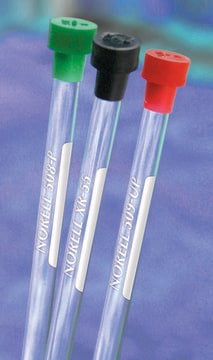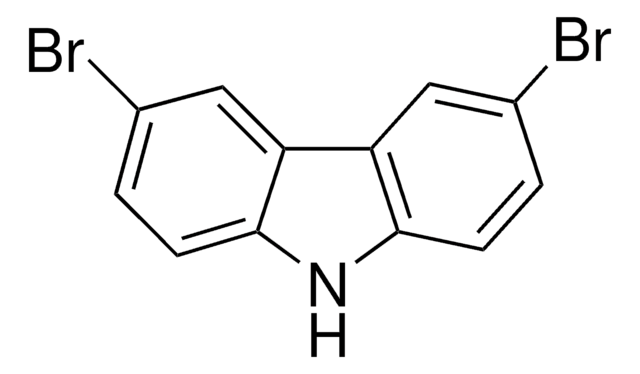932051
2,6-Bis(3-(9H-carbazol-9-yl)phenyl)pyridine
≥99% (HPLC)
Sinonimo/i:
26DCzPPy
About This Item
Prodotti consigliati
Grado
sublimed grade
Livello qualitativo
Descrizione
μh ≈ 1.0 x 10-5 cm2 V−1 s−1
μe ≈ 1.0 x 10-5 cm2 V−1 s−1
Saggio
≥99% (HPLC)
Perdita
0.5% TGA, > 370 °C (weight loss)
Solubilità
chloroform: soluble
dichloromethane: soluble
toluene: soluble
Fluorescenza
λem 410 nm±10 nm in dichloromethane
Energia dell’orbitale
HOMO 6.05 eV
LUMO 2.56 eV
λ
in dichloromethane
Assorbanza UV
λ: 239 nm±5 nm Amax
λ: 292 nm±5 nm Amax
Stringa SMILE
C1(C2=CC=CC(N3C(C=CC=C4)=C4C5=C3C=CC=C5)=C2)=NC(C6=CC(N7C(C=CC=C8)=C8C9=C7C=CC=C9)=CC=C6)=CC=C1
InChI
1S/C41H27N3/c1-5-22-38-32(16-1)33-17-2-6-23-39(33)43(38)30-14-9-12-28(26-30)36-20-11-21-37(42-36)29-13-10-15-31(27-29)44-40-24-7-3-18-34(40)35-19-4-8-25-41(35)44/h1-27H
UFWDOFZYKRDHPB-UHFFFAOYSA-N
Cerchi prodotti simili? Visita Guida al confronto tra prodotti
Applicazioni
Codice della classe di stoccaggio
11 - Combustible Solids
Classe di pericolosità dell'acqua (WGK)
WGK 3
Punto d’infiammabilità (°F)
Not applicable
Punto d’infiammabilità (°C)
Not applicable
Scegli una delle versioni più recenti:
Certificati d'analisi (COA)
Ci dispiace, ma al momento non ci sono COA disponibili online per questo prodotto.
Se ti serve aiuto, non esitare a contattarci Servizio Clienti
Possiedi già questo prodotto?
I documenti relativi ai prodotti acquistati recentemente sono disponibili nell’Archivio dei documenti.
Il team dei nostri ricercatori vanta grande esperienza in tutte le aree della ricerca quali Life Science, scienza dei materiali, sintesi chimica, cromatografia, discipline analitiche, ecc..
Contatta l'Assistenza Tecnica.








